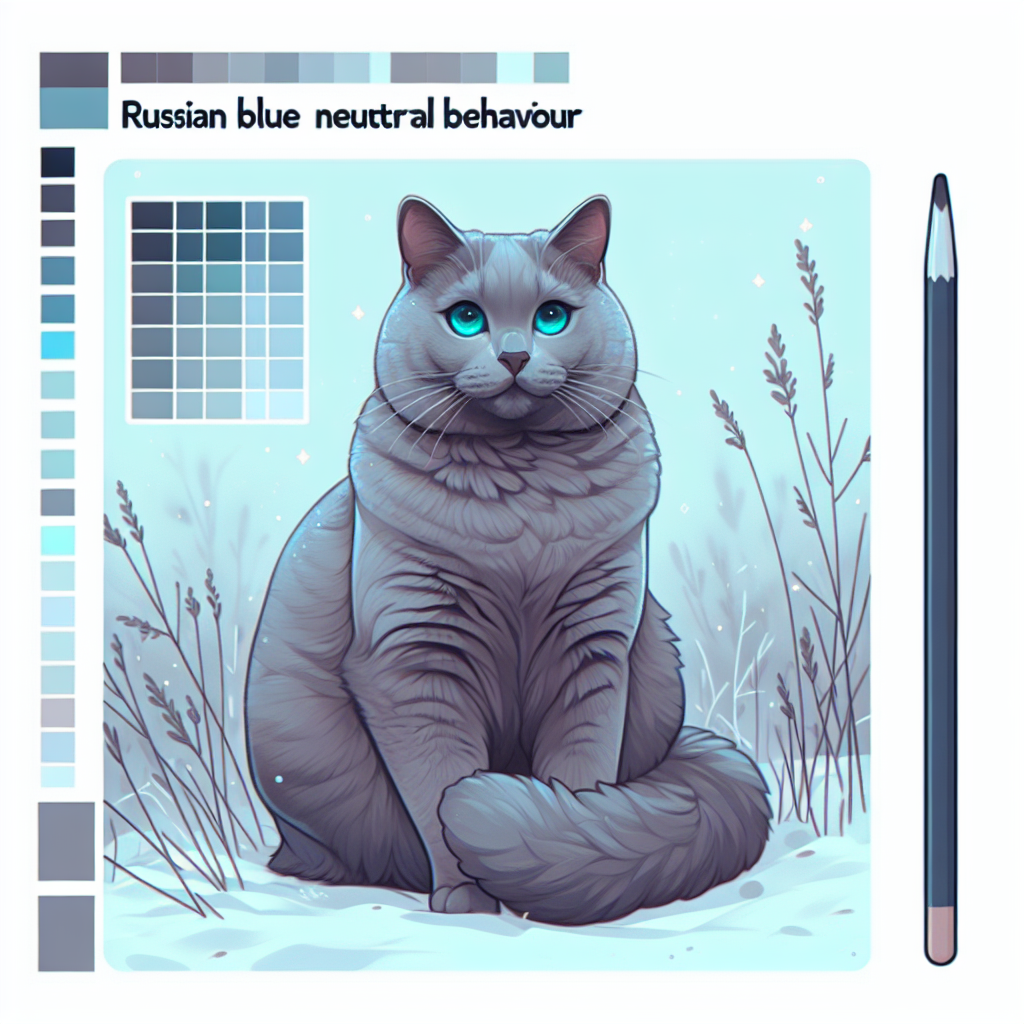Blog
are russian blue cats aggressive
Understanding the Temperament of Russian Blue Cats

Russian Blue cats are known for their striking appearance, with their shimmering silver-blue coat and bright green eyes. They are often described as elegant, intelligent, and affectionate creatures. However, there is a common misconception that these cats are aggressive and difficult to handle. In this article, we will delve into the temperament of Russian Blue cats and debunk the myth of their aggression.
First and foremost, it is important to understand that every cat, regardless of breed, has its own unique personality. While certain breeds may have general characteristics, it is not fair to label all cats of a particular breed as aggressive. This is especially true for Russian Blue cats, who are actually known for their calm and gentle nature.
One of the reasons why Russian Blue cats are often mistaken for being aggressive is due to their reserved and cautious nature. These cats are not as outgoing and social as some other breeds, and they may take some time to warm up to new people and environments. This can be misinterpreted as aggression, as they may hiss or swat when feeling threatened or uncomfortable. However, with proper socialization and a calm and patient approach, Russian Blue cats can become loving and affectionate companions.
Another factor that contributes to the misconception of Russian Blue cats being aggressive is their strong hunting instincts. These cats were originally bred as working cats, tasked with keeping rodents at bay in Russian homes and warehouses. As a result, they have a natural instinct to chase and hunt, which can sometimes be mistaken for aggression. However, this behavior is not unique to Russian Blue cats and can be seen in many other breeds as well. With proper training and playtime, this instinct can be redirected towards appropriate toys and activities.
It is also worth noting that Russian Blue cats are not known for being territorial or possessive. This is a common trait in many other breeds, but Russian Blues are generally more laid-back and easy-going. They are not likely to become aggressive towards other cats or even dogs, making them a great choice for multi-pet households.
Furthermore, Russian Blue cats are highly intelligent and require mental stimulation to keep them happy and content. If they are not provided with enough mental and physical stimulation, they may become bored and exhibit destructive behavior. This can sometimes be mistaken for aggression, as they may scratch or bite out of frustration. However, this can easily be avoided by providing them with interactive toys and engaging playtime.
In addition to their calm and gentle nature, Russian Blue cats are also known for their loyalty and devotion to their owners. They form strong bonds with their human companions and are often described as being “dog-like” in their behavior. They will follow their owners around the house, greet them at the door, and even play fetch. This level of affection and loyalty is not typically seen in aggressive cats.
In conclusion, Russian Blue cats are not aggressive by nature. They may exhibit certain behaviors that can be mistaken for aggression, but with proper socialization, training, and care, they can make loving and gentle companions. It is important to remember that every cat is an individual and should not be judged based on their breed. With patience and understanding, Russian Blue cats can prove to be wonderful and affectionate pets.
Tips for Managing Aggression in Russian Blue Cats
Russian Blue cats are known for their striking blue-grey coat, piercing green eyes, and elegant demeanor. They are often described as intelligent, affectionate, and playful. However, there is a common misconception that these cats can be aggressive. In this article, we will explore the truth behind this belief and provide tips for managing aggression in Russian Blue cats.
First and foremost, it is important to understand that aggression in cats is a natural behavior. It is a way for them to communicate and establish boundaries. However, when this behavior becomes excessive or directed towards humans, it can be a cause for concern. Russian Blue cats, like any other breed, can display aggressive behavior, but it is not a defining characteristic of their breed.
One of the reasons why Russian Blue cats may be perceived as aggressive is their strong prey drive. These cats were originally bred as hunters, and their instincts to chase and catch prey are still very much present. This can manifest in behaviors such as pouncing, chasing, and even biting. It is important to provide outlets for this energy, such as interactive toys and playtime, to prevent it from being directed towards humans.
Another factor that may contribute to aggression in Russian Blue cats is their sensitivity to changes in their environment. These cats thrive on routine and can become stressed or anxious when there are changes in their surroundings. This can lead to defensive or aggressive behavior. It is important to introduce any changes slowly and provide a safe and comfortable space for your cat to retreat to if they feel overwhelmed.
Socialization is also crucial in managing aggression in Russian Blue cats. These cats are known for their strong bond with their owners, but they can be wary of strangers. It is important to expose them to different people and environments from a young age to help them feel more comfortable and confident in new situations. This can also help prevent fear-based aggression towards unfamiliar people.
Proper training and discipline are essential in managing aggression in Russian Blue cats. It is important to establish yourself as the leader of the household and set clear boundaries for your cat. This can be done through positive reinforcement training, where good behavior is rewarded and unwanted behavior is ignored. Punishment or physical discipline should never be used as it can lead to fear and aggression in cats.
If your Russian Blue cat is displaying aggressive behavior, it is important to address it immediately. Ignoring the behavior or responding with aggression will only reinforce it. Instead, try to identify the trigger for the behavior and redirect your cat’s attention to a more appropriate activity. For example, if your cat is scratching or biting, provide them with a scratching post or a toy to play with.
In some cases, aggression in Russian Blue cats may be a sign of an underlying medical issue. If your cat’s behavior suddenly changes or becomes more aggressive, it is important to consult with a veterinarian to rule out any potential health problems. Pain or discomfort can cause cats to act out aggressively, and addressing the underlying issue can help improve their behavior.
In conclusion, Russian Blue cats are not inherently aggressive. Like any other breed, they can display aggressive behavior, but it is not a defining characteristic. By understanding their natural instincts, providing proper socialization and training, and addressing any potential medical issues, you can effectively manage aggression in your Russian Blue cat. Remember to always approach your cat with patience, love, and understanding, and seek professional help if needed. With proper care and attention, your Russian Blue cat can be a loving and well-behaved companion.

